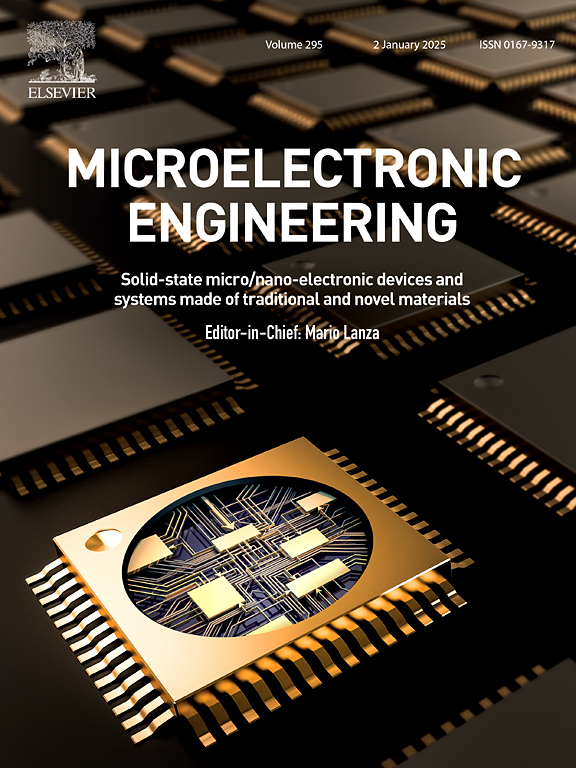x射线辅助设备改造(XADA)实验室系统
IF 3.1
4区 工程技术
Q2 ENGINEERING, ELECTRICAL & ELECTRONIC
引用次数: 0
摘要
向后置供电(BPD)架构和集成电路(ic) 3D堆叠的转变为故障分析(FA)带来了重大挑战。传统的基于近红外(NIR)的故障隔离技术,如激光辅助设备改造(LADA),由于近红外屏蔽金属化层而失效。x射线辅助设备改变(XADA)作为一种强大的替代方案出现,利用x射线的穿透能力来瞄准和改变晶体管的行为。x射线穿透近红外不透明材料的能力被大量用于封装部件和电路板的无损检测。对于这些应用,电离x射线改变晶体管特性的能力是不可取的。然而,最近,有意利用这些电离效应的目标设备改变使用微聚焦,扫描x射线束,类似于LADA,已被探索。本文提供了XADA的扩展分析,介绍了x射线源设计,聚焦光学和实验方法的进展。此外,系统级创新,包括高精度导航和同轴光学设置,使XADA成为bpd时代集成电路FA的变革性工具。本文章由计算机程序翻译,如有差异,请以英文原文为准。
A laboratory system for X-ray assisted device alteration (XADA)
The shift toward backside power delivery (BPD) architecture and 3D stacking of integrated circuits (ICs) introduces significant challenges for failure analysis (FA). Traditional near-infrared (NIR)-based fault isolation techniques such as Laser-Assisted Device Alteration (LADA) are rendered ineffective by NIR-blocking metallization layers. X-ray-Assisted Device Alteration (XADA) emerges as a powerful alternative, leveraging the penetrating capability of x-rays to target and alter transistor behavior. The ability of x-rays to penetrate near-infrared opaque materials is heavily exploited for non-destructive inspection of packaged parts and circuit boards. For these applications, the ability of the ionizing x-rays to alter transistor characteristics is undesirable. Recently, however, the intentional exploitation of these ionizing effects for targeted device alteration using a micro-focused, scanning x-ray beam, analogous to LADA, has been explored. This paper provides an expanded analysis of XADA, introducing advancements in x-ray source design, focusing optics, and experimental methodologies. Additionally, system-level innovations, including high-precision navigation and co-axial optical setups, position XADA as a transformative tool for FA of BPD-era ICs.
求助全文
通过发布文献求助,成功后即可免费获取论文全文。
去求助
来源期刊

Microelectronic Engineering
工程技术-工程:电子与电气
CiteScore
5.30
自引率
4.30%
发文量
131
审稿时长
29 days
期刊介绍:
Microelectronic Engineering is the premier nanoprocessing, and nanotechnology journal focusing on fabrication of electronic, photonic, bioelectronic, electromechanic and fluidic devices and systems, and their applications in the broad areas of electronics, photonics, energy, life sciences, and environment. It covers also the expanding interdisciplinary field of "more than Moore" and "beyond Moore" integrated nanoelectronics / photonics and micro-/nano-/bio-systems. Through its unique mixture of peer-reviewed articles, reviews, accelerated publications, short and Technical notes, and the latest research news on key developments, Microelectronic Engineering provides comprehensive coverage of this exciting, interdisciplinary and dynamic new field for researchers in academia and professionals in industry.
 求助内容:
求助内容: 应助结果提醒方式:
应助结果提醒方式:


